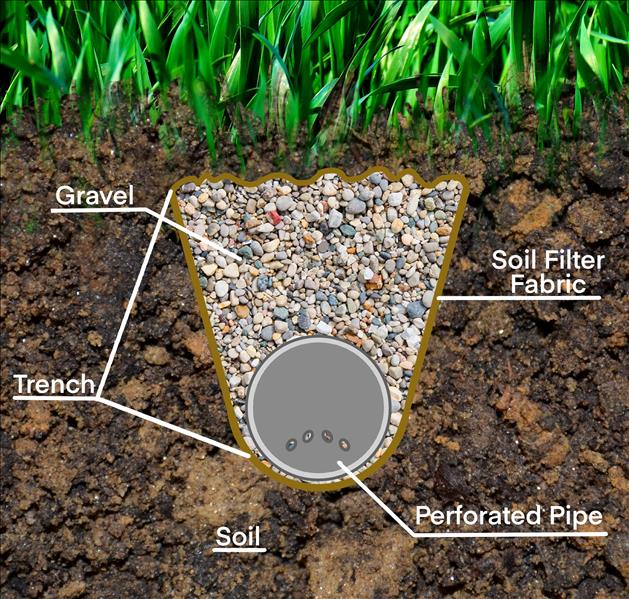How Can I Benefit from Installing a French Drain as a Homeowner in Santa Barbara?
12/28/2023 (Permalink)
A French drain can be an effective tool in helping to prevent flooding, particularly in areas where excess water accumulation is a concern. Here's how a French drain can help prevent flooding:
Redirecting Water: A French drain is designed to redirect water away from a specific area, such as the foundation of a building or a low-lying yard. When installed correctly, it can intercept and collect water before it has a chance to pool or flood the area.
Managing Groundwater: French drains are commonly used to manage groundwater around buildings. They can prevent water from seeping into basements or crawl spaces, reducing the risk of indoor flooding during heavy rain or high water table conditions.
Preventing Soil Saturation: In yards and gardens, French drains can help prevent soil saturation, which can lead to waterlogging and surface flooding. By draining excess water away, they keep the soil at an optimal moisture level.
Controlling Erosion: French drains are effective in preventing erosion by redirecting water and preventing soil from being washed away during heavy rainfall.
Flood Mitigation: In areas prone to localized flooding, properly designed and installed French drains can divert water away from vulnerable spots, reducing the risk of flooding during heavy rain events.
However, it's important to note that the effectiveness of a French drain in flood prevention depends on several factors, including the drain's design, capacity, and location. Additionally, a French drain may not be a standalone solution for preventing flooding in all situations. It is often part of a broader drainage system that includes proper grading, surface drainage, and other measures.
The combination of the risk of wildfires in the summer, heavy rain in the winter, and the rolling landscape of Santa Barbara significantly heightens the risk of flooding for homeowners. When wildfires scorch the landscape, they leave behind a charred and barren terrain that cannot effectively absorb or retain rainwater. Consequently, when heavy rainfall occurs, the water quickly runs off the hillsides, picking up ash, debris, and soil, which can clog drainage systems and culverts. This accelerated runoff can lead to flash floods, inundating residential areas and putting homes at risk of water damage. The hilly topography further exacerbates the situation by channeling water downhill, increasing the likelihood of flooding in lower-lying neighborhoods, making it imperative for homeowners to be prepared for these flood-related risks in Santa Barbara.





 24/7 Emergency Service
24/7 Emergency Service
